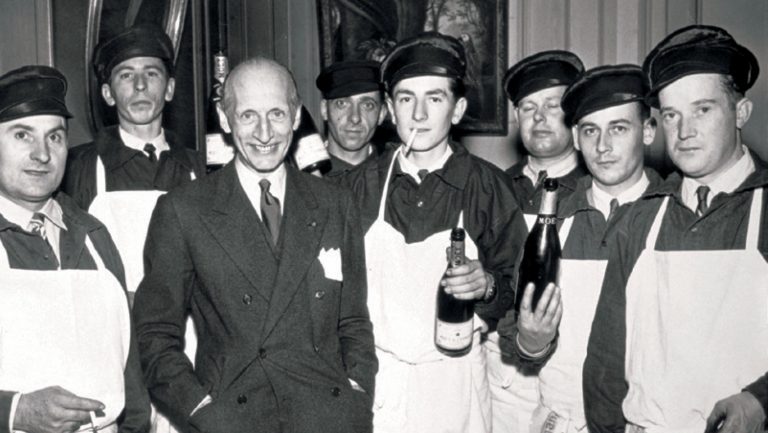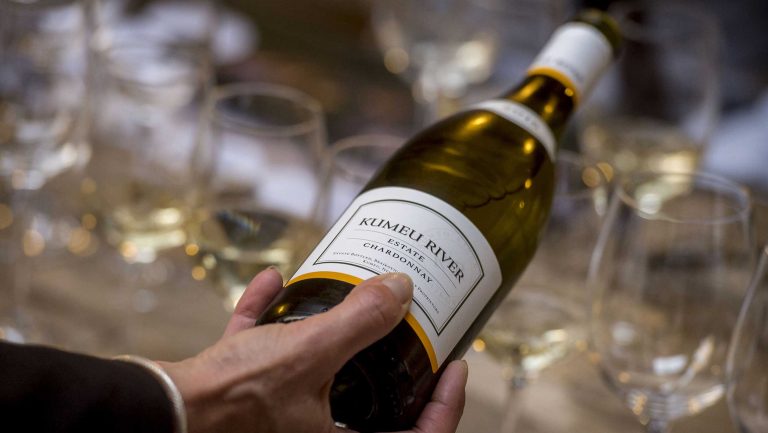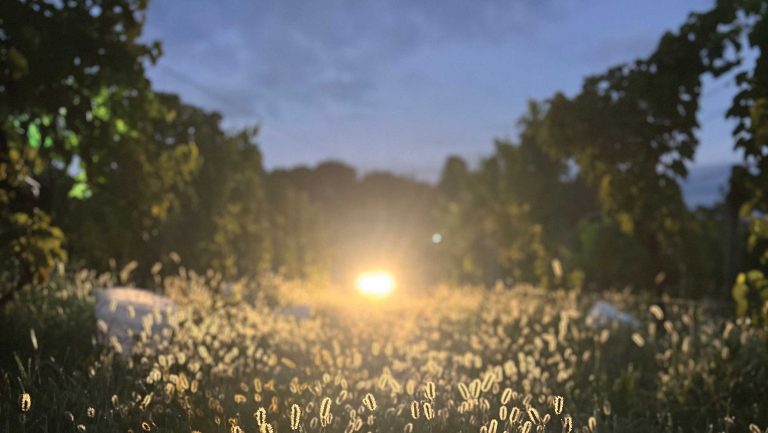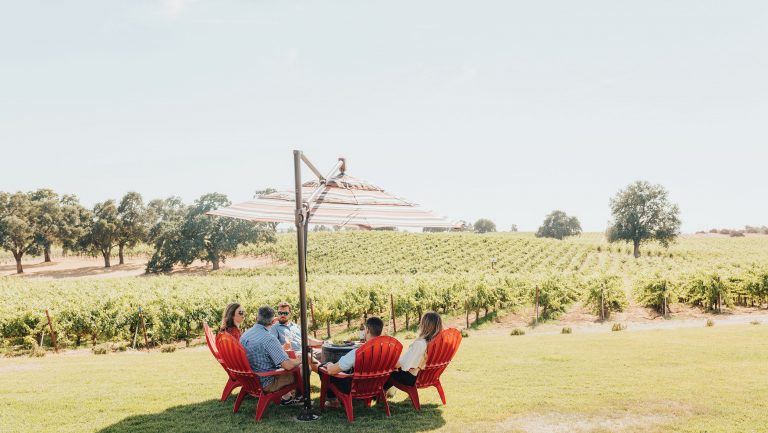Perhaps no wine has such a compelling connection with war as sparkling wine—and in particular, Champagne. Indeed, the bubbly beverage that for centuries has been considered the epitome of frivolity and decadence harbors a dead-serious and embattled history. And it is but one of many wines that have withstood the ravages of multiple wars, its vineyards becoming at times quite literally theaters of battle.
How War Created Champagne As We Know It
Champagne’s very origin is grounded in wartime. Beginning in the late 16th century, according to experts Tom Stevenson and Essi Avellan, the authors of Christie’s Encyclopedia of Champagne and Sparkling Wine, British merchants began importing casks of champenoise wines that hadn’t quite finished fermenting because of the cold temperatures in northern French cellars.
When English wine vendors corked the fresh young wines in glass bottles, a surprising thing happened: Bottles exploded as warmer temperatures caused fermentations to restart. Vessels strong enough to withstand the pressure caused by the buildup of CO2 captured the effervescence, making for a delicious sparkling beverage.
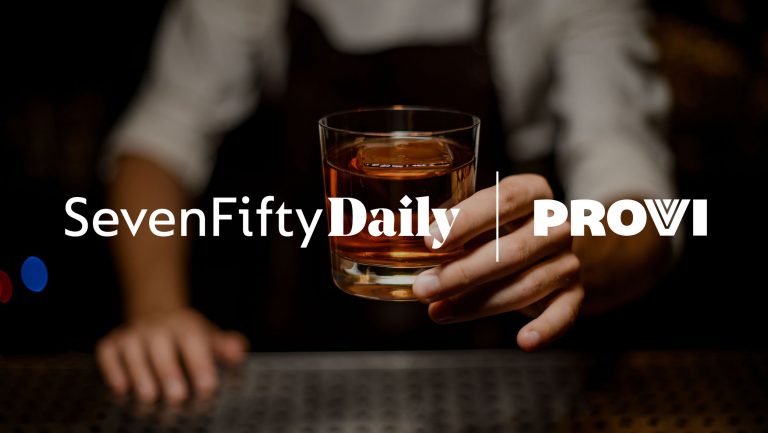
Don’t miss the latest drinks industry news and insights. Sign up for our award-winning newsletters and get insider intel, resources, and trends delivered to your inbox every week.
The only way to ensure a continuing supply of the fizz was to develop stronger glass bottles, and England was poised to do so, thanks to its active navy in the 16th and 17th centuries. With each new maritime engagement, more ships were required—and shipbuilding required timber. So in 1615, King James I issued a proclamation banning the use of charcoal, made from precious wood, for non-naval purposes such as blowing glass.
Enter mined coal from Newcastle, which burned hotter than charcoal, producing stronger, clearer glass. That shift allowed England to build enough ships to stay engaged in both the Thirty Years’ and the Eighty Years’ wars. Indirectly, we can thank those conflicts for spurring the innovation in traditional-method sparkling wine as we know it today.
It could also be argued that war making contributed to Champagne’s reputation as a beverage of the elite. According to Moët & Chandon’s internal history documents, Épernay’s Avenue de Champagne was the road “that the Emperor Napoleon himself took on his way to battle in Poland and Russia, stopping at the Maison Moët to rest, enjoy a drop of Champagne and bask in the hospitality of Jean-Rémy Moët.” Legend has it that Napoleon’s soldiers introduced the practice of sabrage at this time, as it saved them the trouble of dismounting their horses to open and guzzle from bottles of bubbly.
Moët Champagne was the preferred beverage of the Bonaparte household during the many Napoleonic campaigns, and it therefore took on symbolic significance for other world leaders. After the emperor’s defeat, pricey Champagne became the favorite tipple of the victors. When Russian troops occupied and pillaged the Champagne region during this period (1814-1815), champenoise wineries were driven nearly to ruin; Barbe-Nicole Clicquot helped turn the tide by getting the Russian royal court hooked on her effervescent beverages.
How Champagne’s Crayères Saved Its People
The German armed forces spent a great deal of time over the centuries marching through Champagne toward Paris on various campaigns—that is, unless the French were marching along the same route in the opposite direction.
When the Triple Entente—the alliance of the Russian Empire, the French Third Republic, and Great Britain—squared up against the Triple Alliance (Germany, Austria-Hungary, and Italy) in 1914, Champagne, of all of France’s wine regions, was “undoubtedly the [one] most affected” by World War I, according to historian Anaïs Bertrand of the Centre d’Etudes et de Recherche en Histoire Culturelle at the University of Reims. German lines were only two kilometers north of the city of Reims during most of the war, and the city suffered more than 1,000 days of bombing.
But Champagne’s secret weapon lay under its surface: hundreds of miles of quarries, along with cavities and tunnels, carved into the chalk substratum by Gallo-Roman and medieval laborers as early as the fifth century AD—all hidden beneath the region’s villages. Inhabitants used the naturally cooled spaces to store food for centuries, but Nicolas Ruinart was the first wine producer to formally renovate these caves, called crayères, into naturally temperature-controlled storage facilities under Épernay in 1769.
By 1915, miles of the caves had been retrofitted with level floors—suitable for stacking racks of bottles. Staircases and elevators were built. Champagne’s vineyards may have been bombarded during both battles of the Marne, but its cellars remained largely unscathed.
Thousands of citizens of Reims took refuge in the crayères during the war, alongside the French military, who pinned up canvas curtains to make walls and created makeshift desks with planks of wood over stacked Champagne bottles. The caves also provided community for the underground citizens, notes Bertrand, with religious services mounted beneath the houses of Veuve-Clicquot, Pommery, Abelé, and Krug. City offices moved into Veuve-Clicquot’s cellars, and school was taught in multiple crayères. The chalk cellars that had been renovated specifically to age sumptuous wines ended by saving countless lives and returning a sense of purpose to a traumatized population.
Then the war ended, and the region had 21 years to recover before hostilities started up all over again.
How the Cava Makers of Catalonia Survived the Spanish Civil War
While Spain remained neutral in the First and Second World Wars, it was contending with its own chaos: the Spanish Civil War, which, prefigured by uprisings in the early 1900s, broke out in full in 1936.
In Catalonia, Spain’s predominant sparkling-wine region, the situation was complicated, with an unstable alliance of rivals—Republicans, anarchists, and the Catalonian separatist-leaning government—facing down Nationalist forces. To the anarchists, the well-to-do bodega owners of Penèdes Cava country represented the hated bourgeois, while to the Nationalists, the winegrowers’ strong Catalan identities marked them as separatists. The Cava producers themselves mostly identified as democratic-leaning Republicans.
It can’t have helped that Catalonian “champagne” (xampany) symbolized the decadent bourgeois lifestyle. Many of the Cava houses of the Penedès were confiscated and collectivized during this period, and bodega owners fled, seeking refuge in England, France, Mexico, and Argentina. The Freixenet house wasn’t so lucky: Pere Ferrer Bosch and his son Joan Ferrer Sala were kidnapped and murdered by leftist radicals.
Then, on December 23, 1938, General Francisco Franco’s Nationalist, pro-Fascist forces staged a full-on assault on the region, bombing a tank factory on the outskirts of the Cava capital of Sant Sadurní d’Anoia.
Again, underground caves provided a safe harbor. The caves in the Penedès were deeper and more substantial than those in other regions, thanks to the Cava tradition of lengthy bottle aging. The cellars at Codorníu, for example, are as deep as any crayère in Champagne, plunging five floors below ground and tunneling nearly 19 miles (30 kilometers).
How Mussolini Inadvertently Instilled a Northern Italian Tradition of Extended Aging
Giulio Ferrari, a native of Trentino, Italy, learned traditional-method fermentation in Champagne around 1900, and shortly thereafter he established the first substantial Chardonnay plantings in Italy. In 1902, he launched his own winery in Trento, where the cold mountain air and dolomitic soils made for sparkling wines of precise acidity and elegant minerality.
Occupying the valleys connecting the Austrian Alps with the Italian Dolomites, the region of Trentino–Alto Adige/Südtirol has always held great strategic value, with various kingdoms claiming it over the centuries—even today, German is widely spoken. While Trento may have been the ideal spot for Ferrari’s winery, its strategic location where the Adige Valley widens made it an unfortunate place for a politically neutral winemaker to be in business during wartime.
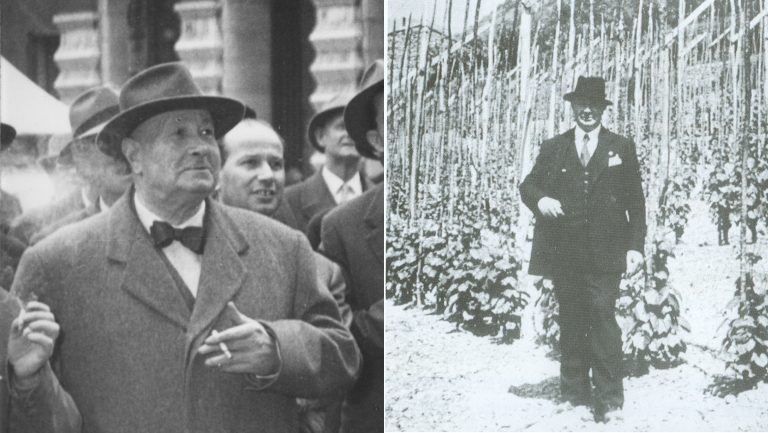
When Italy and Germany signed the Pact of Steel alliance in 1939, German forces moved into Trento, using it as a military staging camp. Ferrari’s winery was located exactly in the center of the town. Presciently, he shut down his business, bricked over his cellar entrance, and hunkered down with relatives in the countryside.
It was a wise move. In 1943, German operatives freed Benito Mussolini, who had been arrested and imprisoned on the orders of King Victor Emmanuel III, and installed him in northern Italy, establishing a German puppet state, while the country’s south sided with the Allies. With the annexation of northern Italy, the Nazis renamed the Trentino–Alto Adige region the Operational Zone of the Alpine Foothills, and members of the German High Command settled in Trento’s center. Upon their final retreat, in 1945, the Germans pillaged and torched nearly everything in their path.
Giulio Ferrari returned to Trento expecting to find his winery in ruins. Instead, he was dumbstruck to find the building still standing and the bottles in his cellars largely unscathed despite months of intense tremors caused by nearby bombing.
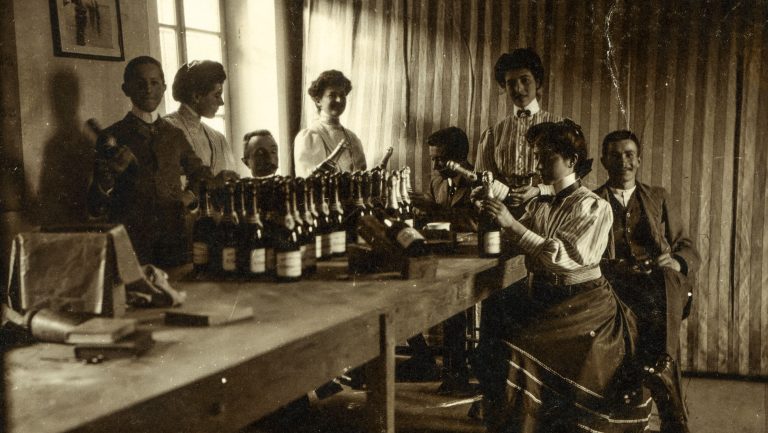
In fact, the vibrations appeared to have had a curiously salubrious effect on the bottles. “When Giulio tasted these aged wines,” says Jamie Stewart, Ferrari’s U.S. brand ambassador, “he was overcome by qualities in them that had not been [present] in his earlier production.” Sealed and protected during the war years, the wines showed “sensual textures, extruded flavors, greater depth, [and] more pronounced persistence of flavor.”
Ferrari had been bottle-aging his wines for 18 to 24 months. But the depth of the aromatics and flavor in the postwar bubbly convinced him that additional years of aging en tirage enhanced the wine. Today, the Ferrari winery continues to routinely age its sparkling wines sur lie for extended periods. While its basic brut ages 20 months, its Maximum, Perlé, Reserve, and Gran Cuvée lies age from three years to more than a decade—highly unusual in Italy.
The Nazi Fascination with Champagne
Some of the most dramatic accounts about the connection between war and Champagne have been reported by the Paris-based authors Petie and Don Kladstrup in their books Champagne: How the World’s Most Glamorous Wine Triumphed Over War and Hard Times and Wine & War: The French, the Nazis, & the Battle for France’s Greatest Treasure.
“We arrived at ‘the right time,’” the Kladstrups said in a recent email (their books were published in 2002 and 2006). “Enough time had passed since the war that many were finally ready to discuss their roles … We came at a moment when ‘the greatest generation’ was ready to reflect, remember, and share. Nearly everyone we talked to has now passed from the scene.”
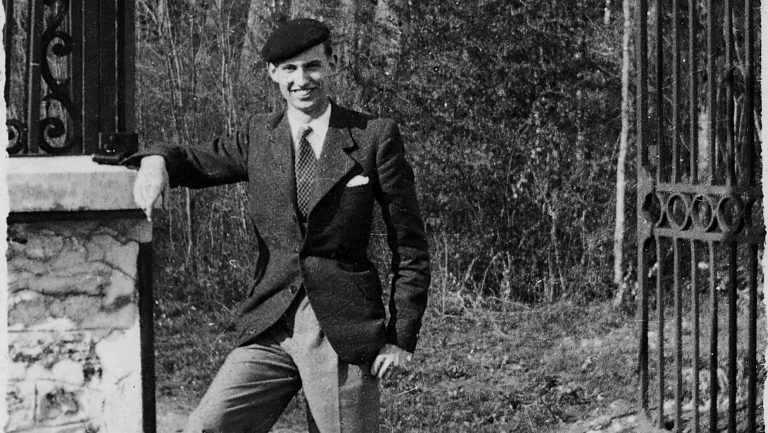
Wine & War opens with an astonishing scene. Four days after Adolf Hitler’s suicide, a young French army sergeant and former Resistance fighter named Bernard de Nonancourt, accompanied by a team of French soldiers, used dynamite to blow the steel doors off the Eagle’s Nest, a fortified clifftop structure above the Nazi vacation town of Berchtesgaden in Germany. The soldiers climbed hand and foot to reach the fortress at 6,000 feet. Once inside, they turned on their flashlights and found at least half a million bottles of the finest French wines hidden in the extensive tunnels.
The stash included hundreds of cases of the 1928 vintage of Salon, the very maison whose looting de Nonancourt had witnessed five years earlier while working at his family’s winery, Lanson, across the street. (Within a few years’ time, de Nonancourt would be back in the wine business and running Laurent-Perrier; in 1988, his company acquired Salon, bringing his story full circle.)
Remarkable stories like de Nonancourt’s, the Kladstrups said, reflect that “Champagne was seen as something unique and special.” The Nazis even appointed a “weinführer” to oversee Champagne’s production, ensuring that plenty of bottles made their way to their leaders, even as the Champenoise tried to sabotage their own businesses to keep them out of enemy hands so that, once the war ended, Champagne would not become a multimillion-dollar industry owned and operated by Hitler’s so-called Thousand-Year Reich.
The crayères again played a role as producers hastily walled off sections of their caves, concealing bottles and barrels. They also became an underground headquarters for the Resistance, hiding fugitives, arms, and supplies. Resistance leaders, according to the Kladstrups, were able to forewarn the Allies about the movements of the Nazis by consulting the week’s Champagne orders: Wherever fine sparkling wine was sent, German military leaders soon appeared.
Could the Cold War Have Brought Bubbles to South America?
Count Robert-Jean de Vogüé, the creator of the Dom Pérignon cuvée and the managing director of Moët & Chandon between 1930 and 1972, and his glamorous wife, Moët heiress Ghislaine d’Eudeville, were international style icons from the late 1940s through the early 1970s, jet-setting and socializing with everyone from President Dwight Eisenhower to Gary Cooper during their frequent visits to the United States. But in the wine world, de Vogüé will be remembered for establishing Chandon outposts in Argentina, Brazil, and Napa Valley—years before competitors Mumm and Roederer.
De Vogüé’s military experience was fraught with intrigue. At age 18, he enlisted and fought valiantly in the First World War, and he remained a military officer until taking the reins at Moët in 1930. When World War II broke out, he played a key civilian role. According to the Kladstrups, he was elected by his peers to represent the Champagne maisons in dealings with the weinführer, who demanded hundreds of thousands of bottles a week for requisition by German officers, as well as any German-controlled restaurant, bar, club, or hotel in France.
The count formed a union of wineries, the CIVC (Comité Interprofessionnel du Vin de Champagne)—which oversees the business of the region to this day—and persuaded the weinführer to lower quotas, thus alleviating shortages of raw materials and enabling the wine region to continue functioning. A skilled negotiator, de Vogüé even managed to persuade the Germans to free 700 French prisoners of war, citing their importance to Champagne’s production.
While conducting these activities, de Vogüé was also serving as a political leader of the Eastern French Resistance. The Gestapo discovered his duplicity in 1943, arrested him, and sentenced him to death, but thanks to diplomatic interventions and an all-out strike by the workers of Champagne, he was sent to a labor camp in Germany instead—essentially, a slower death sentence.
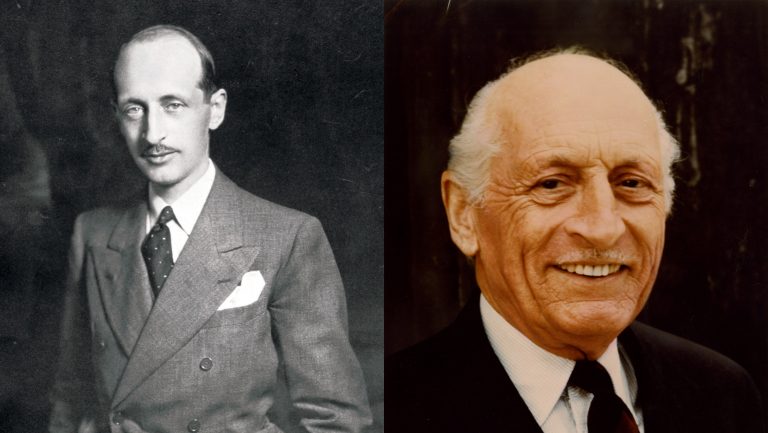
De Vogüé, however, managed to survive until British paratroopers liberated the camp in 1945. He was highly decorated for his service in both wars, and upon reentering business, established retirement, healthcare, and worker-participation programs for his employees that later served as models for French law. And in the wine world, his vision led to the establishment of Chandon in Argentina in 1959.
In his book, The Vineyard at the End of the World, Ian Mount suggests that Chandon’s Argentina location may have arisen out of a “post–World War II paranoia, when people believed that the Soviet Union would invade France.”
But why Argentina? The nation had established a tradition of neutrality and maintained it throughout World War II. This—and its far-flung location—attracted investors like Baron Bertrand de Ladoucette, the owner of an eponymous winery in the Loire Valley and the husband of de Vogüé’s niece, Élisabeth. The de Ladoucettes, Mount writes, may have settled in Argentina to invest in ranch land far from Soviet (or German) influence.
Ironically, unbeknownst to de Vogüé and the de Ladoucettes, a number of Nazi war criminals had secretly fled to Argentina after the war, where they hid from the United Nations War Crimes Commission among the nation’s sizable German immigrant population. Eventually, in 1960, Israeli Mossad agents tracked down and captured Adolf Eichmann, one of the chief architects of the Holocaust, in Buenos Aires—just a year after Chandon Argentina opened its doors.
That suggests the possibility that Eichmann may once have toasted his temporary freedom with a glass of Chandon Argentina.
Katherine Cole’s upcoming book Sparkling Wine Any Time (Abrams, Fall 2020) inspired the research for this article.

Dispatch
Sign up for our award-winning newsletter
Don’t miss the latest drinks industry news and insights—delivered to your inbox every week.
Katherine Cole is the author of four books on wine, including Rosé All Day. She is also the executive producer and host of The Four Top, a James Beard Award–winning food-and-beverage podcast on NPR One. She is currently working on a fifth book, Sparkling Wine Anytime (Abrams), to be published in Fall 2020.

